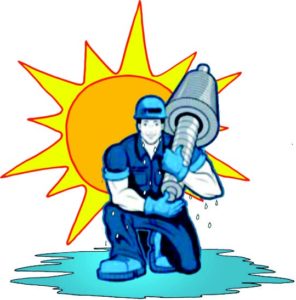Heat Stress
 It’s that time of year again – summertime – hot and unbearable weather. This year is starting off in pretty much the same pattern as years gone by. All over the U.S we are seeing extremely high heat temperatures, especially in the western portion where temperatures are reaching an average of 112° to 128° degrees. Many people are exposed to heat on some jobs, outdoors, or in hot indoor environments. Operations involving high air temperatures, radiant heat sources, high humidity, direct physical contact with hot objects, or strenuous physical activities have a high potential for causing heat-related illness.
It’s that time of year again – summertime – hot and unbearable weather. This year is starting off in pretty much the same pattern as years gone by. All over the U.S we are seeing extremely high heat temperatures, especially in the western portion where temperatures are reaching an average of 112° to 128° degrees. Many people are exposed to heat on some jobs, outdoors, or in hot indoor environments. Operations involving high air temperatures, radiant heat sources, high humidity, direct physical contact with hot objects, or strenuous physical activities have a high potential for causing heat-related illness.
Why is heat a hazard to workers?
When a person works in a hot environment, the body must get rid of excess heat to maintain a stable internal temperature. It does this mainly through circulating blood to the skin and through sweating.
When the air temperature is close to or warmer than normal body temperature, cooling of the body becomes more difficult. Blood circulated to the skin cannot lose its heat. Sweating then becomes the main way the body cools off. But sweating is effective only if the humidity level is low enough to allow evaporation and if the fluids and salts that are lost are adequately replaced.
If the body cannot get rid of excess heat, it will store it. When this happens, the body’s core temperature rises and the heart rate increases. As the body continues to store heat, the person begins to lose concentration and has difficulty focusing on a task, may become irritable or sick, and often loses the desire to drink. The next stage is most often fainting and even death if the person is not cooled down.
Excessive exposure to heat can cause a range of heat-related illnesses, from heat rash and heat cramps to heat exhaustion and heat stroke. Heat stroke can result in death and requires immediate medical attention.
Exposure to heat can also increase the risk of injuries because of sweaty palms, fogged-up safety glasses, dizziness, and burns from hot surfaces or steam.
How can heat-related illness be prevented?
Heat-related illnesses can be prevented. Important ways to reduce heat exposure and the risk of heat-related illness include engineering controls, such as air conditioning and ventilation, that make the work environment cooler, and work practices such as work/rest cycles, drinking water often, and providing an opportunity for workers to build up a level of tolerance to working in the heat. Employers should include these prevention steps in worksite training and plans. Also, it’s important to know and look out for the symptoms of heat-related illness in yourself and others during hot weather. Plan for an emergency and know what to do – acting quickly can save lives!
Remember, refrain from alcohol intake the night prior and drink plenty of fluids during the shift.
